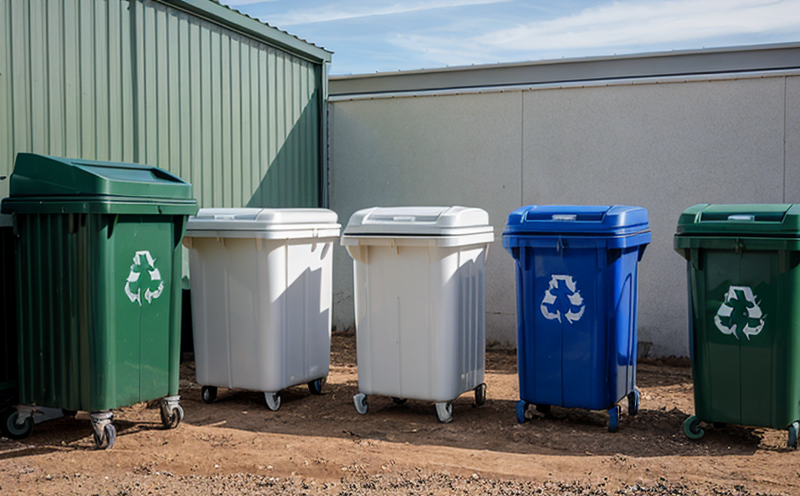ISO 14067-3 Carbon Footprint Verification for Products
The ISO 14067 series of standards provides a framework for organizations to quantify, report and verify the carbon footprint of products. This service specifically focuses on verifying compliance with these international norms, ensuring that your product's carbon footprint is accurately reported.
Accurate carbon footprint verification is crucial in today’s sustainability-driven market. Consumers are increasingly demanding transparency regarding environmental impact, leading to a growing need for robust testing and certification processes. By adhering to ISO 14067-3 standards, businesses can demonstrate their commitment to sustainability and gain a competitive edge.
The verification process involves several key steps. Initially, the product’s life cycle is comprehensively analyzed from raw material extraction through production, distribution, use, and final disposal. This analysis helps identify all potential sources of greenhouse gas emissions. Once identified, these emission sources are quantified based on specified methodologies outlined in ISO 14067-3.
After quantification, the carbon footprint is verified by an independent third party using a verification protocol that ensures accuracy and reliability. This includes cross-referencing data with industry benchmarks, checking against historical records, and ensuring compliance with relevant emission factors. The verification process not only confirms the reported figures but also enhances credibility through rigorous scrutiny.
Upon successful verification, businesses receive an official certificate confirming adherence to ISO 14067-3 standards. This certification is invaluable for marketing purposes, as it allows companies to communicate their environmental credentials effectively. It also supports regulatory compliance, helping organizations meet increasingly stringent environmental regulations worldwide.
The benefits of this service extend beyond mere compliance. By participating in carbon footprint verification, businesses contribute positively to global efforts against climate change. They provide customers with reliable information about the product’s environmental impact, fostering trust and loyalty. Additionally, verified products are more attractive to eco-conscious consumers, potentially boosting market share and brand reputation.
Furthermore, compliance with ISO 14067-3 can lead to operational efficiencies within a company. Identifying key emission sources helps pinpoint areas where improvements can be made in production processes or supply chain management. This leads to reduced costs associated with energy use and waste management. Over time, these optimizations translate into significant financial savings.
The verification process also enhances internal sustainability practices by encouraging continuous improvement initiatives. Employees become more aware of environmental impacts throughout the product lifecycle, fostering a culture of green innovation within the organization.
Benefits
- Enhanced Product Credibility: Receive official certification verifying your product’s carbon footprint aligns with international standards.
- Market Differentiation: Attract environmentally conscious consumers and stakeholders, enhancing brand reputation and appeal.
- Regulatory Compliance: Stay ahead of regulatory requirements by ensuring accurate reporting of greenhouse gas emissions.
- Sustainable Operations: Identify opportunities for operational improvements that lead to reduced costs and increased efficiency.
Environmental and Sustainability Contributions
The carbon footprint verification service plays a vital role in advancing environmental sustainability. By accurately quantifying and verifying the greenhouse gas emissions associated with products, this service helps organizations contribute to global efforts aimed at mitigating climate change.
Through verified product carbon footprints, businesses can make informed decisions that lead to reduced resource consumption and waste generation. This translates into lower overall environmental impacts across various sectors including manufacturing, retail, and consumer goods.
The service also promotes transparency in corporate reporting, which is essential for building trust among stakeholders. When companies openly share verified data about their products' carbon footprints, they foster a culture of responsibility within the industry. This can inspire other organizations to adopt similar practices, encouraging broader adoption of sustainable business models.
Moreover, the verification process supports the development and implementation of effective climate change policies by providing accurate baseline data. Governments and regulatory bodies rely on such information when crafting strategies aimed at reducing national carbon footprints. By contributing accurate verified data, businesses play a crucial role in shaping these policies.
Competitive Advantage and Market Impact
In an increasingly competitive market, demonstrating environmental responsibility has become not just a trend but a strategic necessity. The carbon footprint verification service equips businesses with the tools needed to stand out in this landscape.
Firstly, verified products are more attractive to environmentally conscious consumers who prioritize sustainability when making purchasing decisions. By obtaining certification under ISO 14067-3 standards, companies can ensure their marketing communications about environmental performance are credible and factual.
Secondly, the service enhances corporate reputation by showcasing a commitment to sustainable practices. This reputation is crucial in attracting investment from socially responsible investors who seek to partner with firms aligned with global sustainability goals. Such partnerships often come with financial benefits such as access to low-interest loans or grants for further green initiatives.
Thirdly, verified products are better positioned to comply with emerging regulations related to product carbon footprints. As governments worldwide implement stricter rules regarding emissions reporting, having already undergone verification can save time and resources compared to retroactively complying after a rule change.





